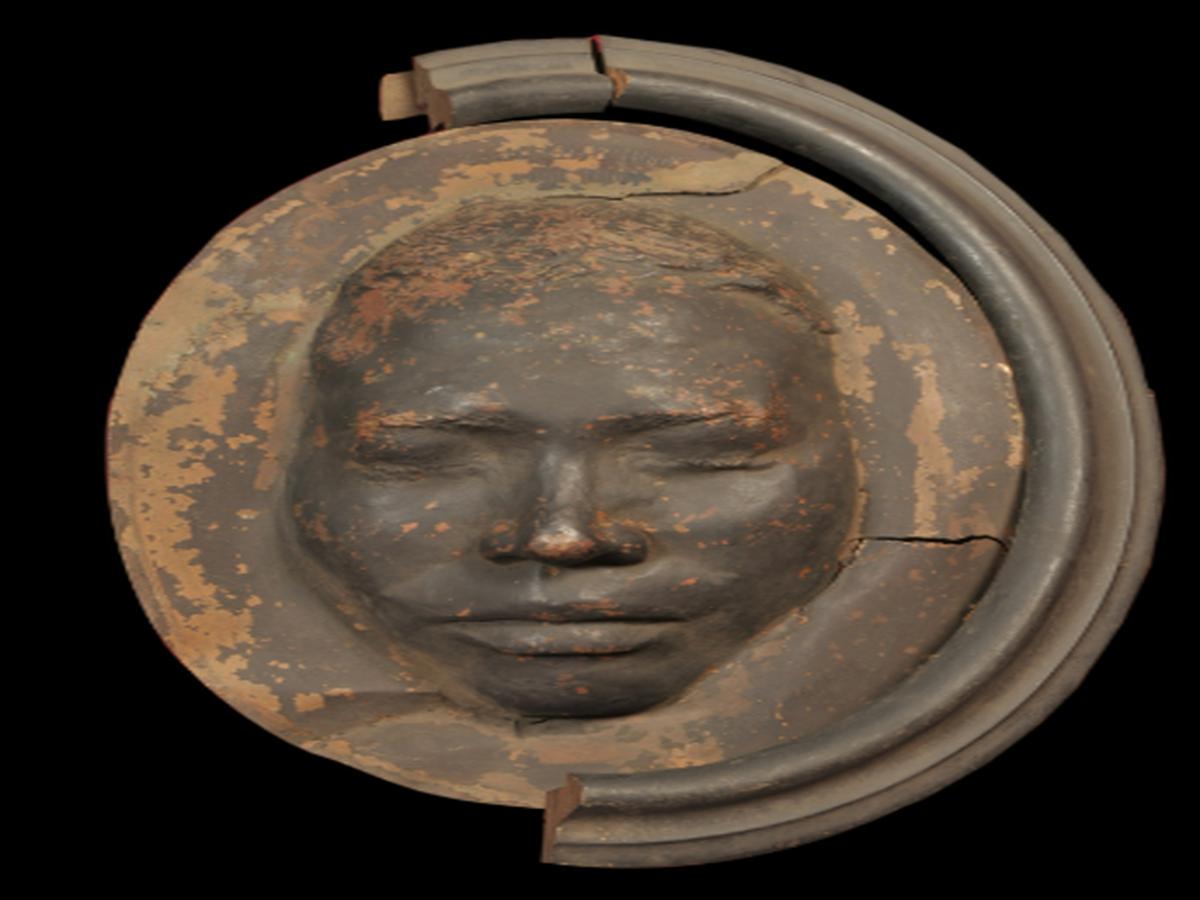State
Tribe Name
Art Type
short description
Oval in shape, the mould holds a cast of the face of Tsarisun, a woman from the Indian region of Ladakh. This casting has extraordinarily skilled execution, presenting the three-dimensional rendering of the facial modelling and tranquil ambiance of the subject. In the upper area of the mould, her name and birthplace are engraved, suggesting commemorative and/ or identificatory functions. The composition would speak about the Bhotia tribe, that is, an ancient Himalayan community, with a culture and Tibetan heritage.
Thumbnail

Filter Postion
Left
Filter Background
Off
Theme
Filter Header Image

content
Image

description
Oval in shape, the mould holds a cast of the face of Tsarisun, a woman from the Indian region of Ladakh. This casting has extraordinarily skilled execution, presenting the three-dimensional rendering of the facial modelling and tranquil ambiance of the subject. In the upper area of the mould, her name and birthplace are engraved, suggesting commemorative and/ or identificatory functions. The composition would speak about the Bhotia tribe, that is, an ancient Himalayan community, with a culture and Tibetan heritage.
Generally found in Ladakh and Uttarkhand, Sikkim, these people called Bhotiya or Bhot were heavily engaged in trans-Himalayan trade, agriculture, and animal husbandry. The Bhotias were indeed Tibetan Buddhists who donned rich types of ornaments and costumes and possessed most elaborate ritual practices sometimes fused between those of Tibetan and Indian. In such contexts, the memorial face moulds like that of Tsarisun may have served as cultural and spiritual memories of the ancestors or of honouring the dead. The importance attached to these artefacts illustrates the expertise in metalwork of the tribe. The detailing and realism of Tsarisun's cast suggest an acknowledgment of the individual and a desire to preserve her identity for posterity. The mould now belongs to the collection of the Indian Museum, Kolkata, and is an important record of Bhotia tribal life, artistry, and modes of remembrance.
Generally found in Ladakh and Uttarkhand, Sikkim, these people called Bhotiya or Bhot were heavily engaged in trans-Himalayan trade, agriculture, and animal husbandry. The Bhotias were indeed Tibetan Buddhists who donned rich types of ornaments and costumes and possessed most elaborate ritual practices sometimes fused between those of Tibetan and Indian. In such contexts, the memorial face moulds like that of Tsarisun may have served as cultural and spiritual memories of the ancestors or of honouring the dead. The importance attached to these artefacts illustrates the expertise in metalwork of the tribe. The detailing and realism of Tsarisun's cast suggest an acknowledgment of the individual and a desire to preserve her identity for posterity. The mould now belongs to the collection of the Indian Museum, Kolkata, and is an important record of Bhotia tribal life, artistry, and modes of remembrance.
Image Mode
portrait
promoted
On
Verified
Off
